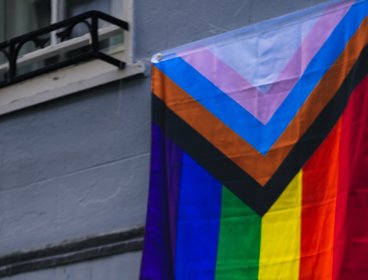By Janet Bowstead, currently working on the Women's Journeyscapes project. Find out more about the project: Women on the move: the journeyscapes of domestic violence (womensjourneyscapes.net).
Violence against women is common, but it is an uncomfortable topic to talk about or do work about. It can feel difficult to get the language ‘right’, and to be both honest and sensitive. It may feel easier to avoid the subject altogether or talk in general terms that do not recognise why violence against women is a geographical issue.
Though violence against women is a human rights violation, recognised worldwide in all societies, that does not mean that geography doesn’t matter. Gender-based violence matters because it matters that most violence in personal relationships is male violence against women (just as it matters that most violence in public and between strangers is male violence against other men). Geography needs to be concerned with such significant societal processes – with the scale of the impact on both individuals and society – and to be able to consider the similarities and differences in and through place and space.
However, any geographical concern with violence against women needs to recognise that the ‘topic’ is already the lived experience of millions worldwide, and that geographical work must build upon the hard-won knowledge of those individuals, as well as researchers and activists over many decades. So, the ‘how’ of this work really matters – including the importance of working with community, voluntary and third sector groups.
If you come to the issue of violence against women from personal experience, then it is important to reflect on others’ experiences too; and any other motivation for concern will also need to be grounded in lived experience. That will not always be comfortable, and one of the unhelpful ways of coping with discomfort is to develop a jargon that creates distance from what is being talked about. No one simple term can cover the realities of violence against women, gender-based violence, domestic abuse, interpersonal violence, intimate partner violence, or domestic violence, so it is important to use a wide range of terms to keep alive and alert to what is being talked about. For that reason, it is also better to avoid acronyms (VAW, GBV, DA, IPV, DV) and to draw instead on a range of language to keep engaged and grounded.

In addition, much has already been written about violence against women, including personal testimony, and it honours those hard-won insights and experience to draw on such work. This includes respecting the knowledge that often does not make its way into academic literature, because the individuals are too busy living and working with violence and abuse to be part of that limited conversation. Working with community, voluntary and third sector groups helps widen the conversations, and bring together knowledge and insights over time.
Work or research with or for community, voluntary or third sector groups may be termed ‘participatory research’ or ‘co-production’ but it is important to recognise that all projects and research with people involves their participation; it is the engagement (or not) with issues of power, social justice and inequality that matters. Rather than a one-off consideration of ‘ethics’, it is about self-questioning the quality of interactions from the start of thinking about the work right the way through.
My research on women’s relocation journeys due to domestic abuse has involved data from service providers and creative groupwork hosted and supported by women’s organisations which are domestic abuse specialists. There was a long lead-in time to agree how the organisations would support the women, and how it would be funded, and this built on my background (and credibility) of working for such organisations in the past.
Key aspects of the research design
-
Making sure that the work is of value to the women as a process – including a comfortable space and food – regardless of any outcomes or outputs.
-
Listening and responding to the different priorities of the individuals and organisations and being honest about my priorities.
-
Allowing time and flexibility, and accepting that some things will not be possible.
-
Funding both the organisations’ time and input and to ensure that the women were not out of pocket e.g. childcare and travel.
Key recommendations / suggestions
-
Build contacts that are mutually beneficial – not just short-term and extractive.
-
Be careful and specific in language – grounding it in lived experience of sex and gender and recognising the limitations.
-
Take seriously providing practical and material benefits and compensation for the individuals and organisations involved.
How to cite
Bowstead, J. (2023) Violence against women. Working with voluntary and community groups. Royal Geographical Society (with IBG) Guide. Available at: https://doi.org/10.55203/CKWK5401
About this guide
Working with voluntary and community organisations for some is a very important way to do geography. These organisation come in various shapes and sizes and may also often be referred to as the third sector, the voluntary sector, not-for-profit organisations, community groups or the civic sector. In this guide, we share the experiences of researchers doing geography in collaboration with community and voluntary organisations. A range of topics and issues are explored from health, disability and care, through to austerity, violence, and craft, amongst others. We learn about the approaches taken by geographers in their work with community and voluntary organisations, and some of the challenges they have negotiated in the process.



